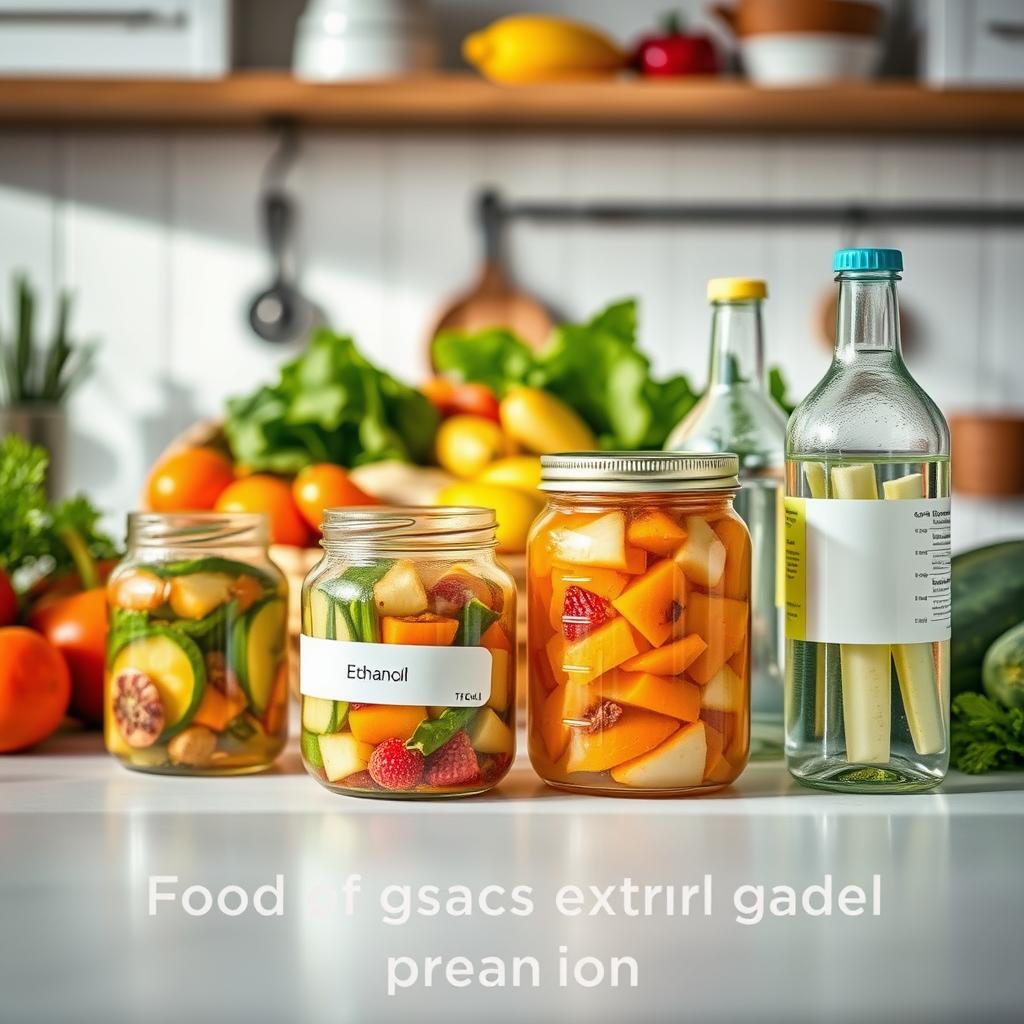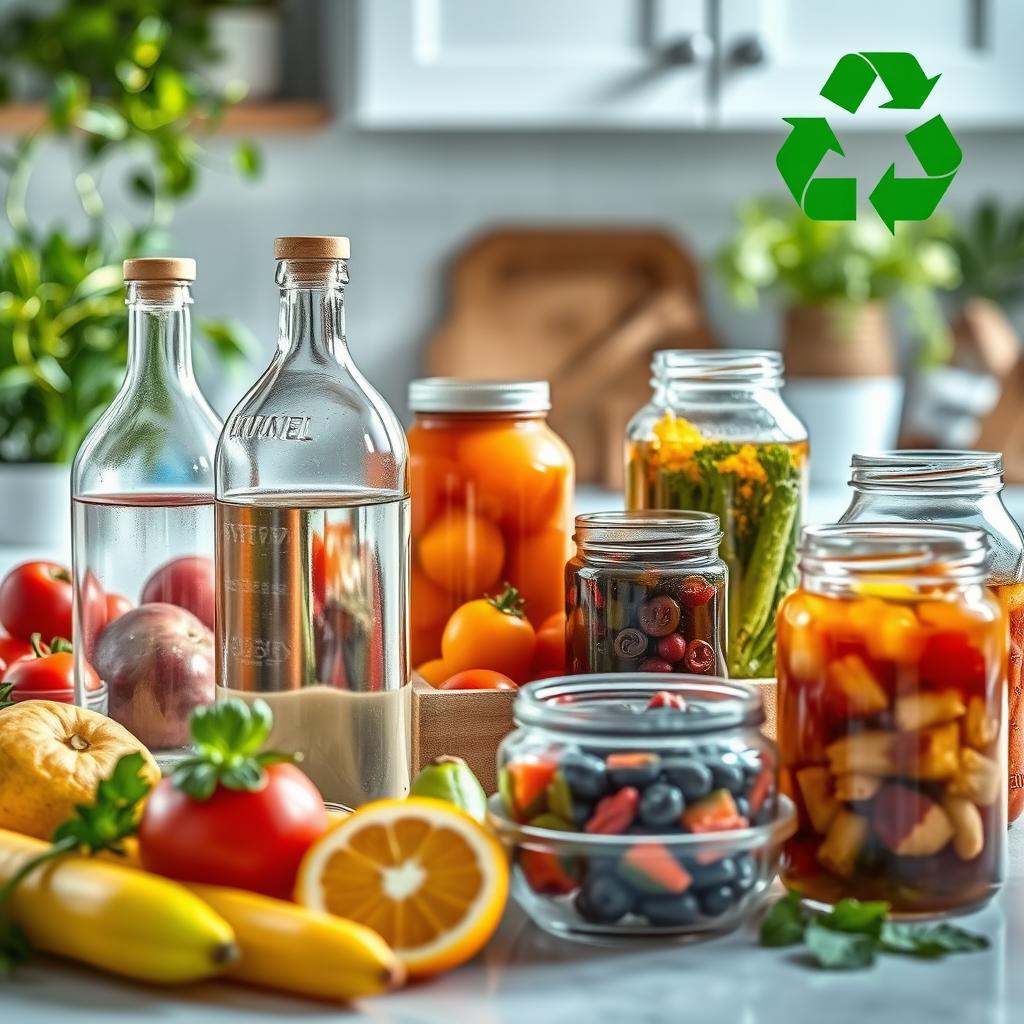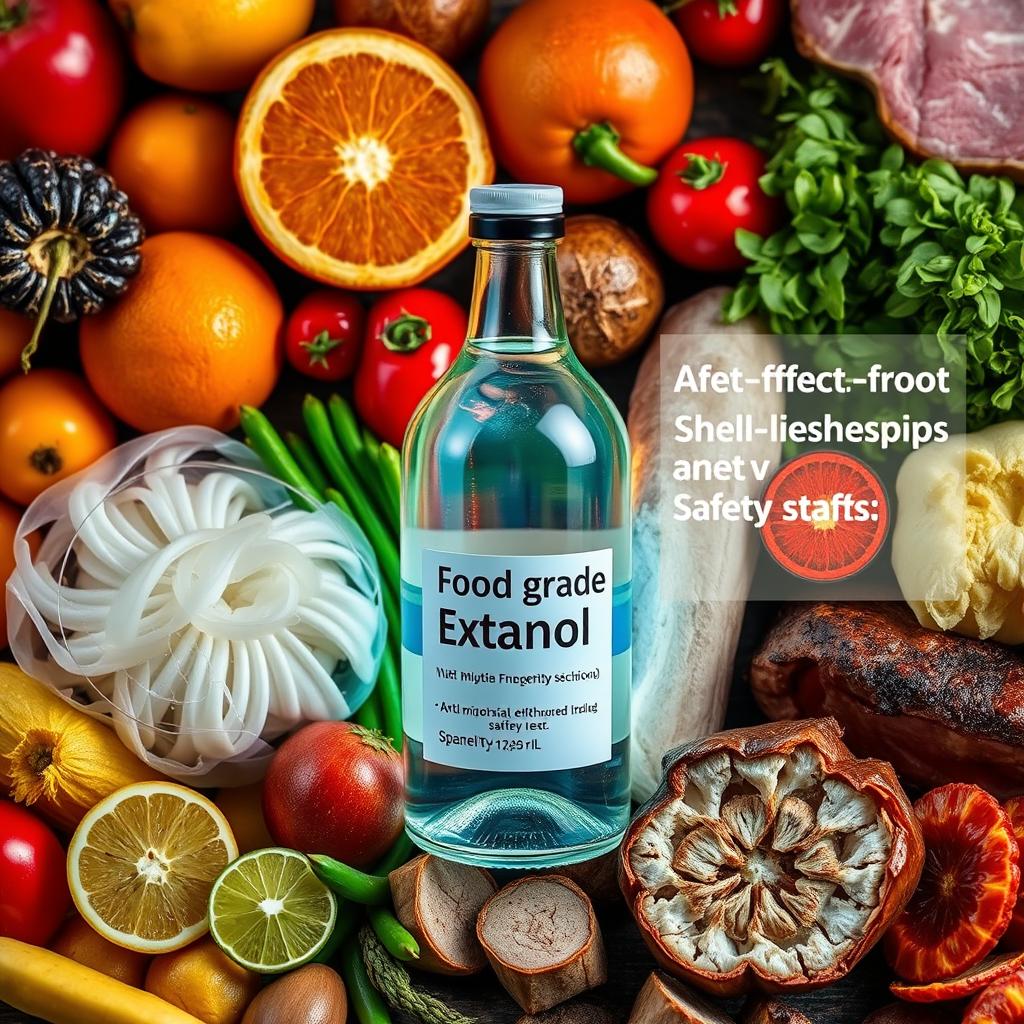Imagine a way to cut down foodborne illness risks and make food last longer. Food grade ethanol is making waves for this reason. It’s key in making food safer and lasting longer, vital for food processing and preservation. Using food grade ethanol brings many benefits. It’s changing the food industry for the better. Knowing how it works helps food makers create safer, better products for us. Food grade ethanol is ethanol made for food use. It’s a big deal in food processing, and its use is growing. It makes food safer and last longer, making it crucial in food safety and preservation.
Click to use Silverigroup personal shopper services
Key Takeaways:
- Food grade ethanol improves the safety and shelf-life of food by reducing the risk of contamination and spoilage.
- The use of food grade ethanol is becoming increasingly widespread in the food industry.
- Food grade ethanol is a key ingredient in many food processing applications.
- It plays a crucial role in reducing the risk of foodborne illnesses.
- The benefits of using food grade ethanol include extended shelf-life and improved food safety.
- Food grade ethanol is a solution that has been gaining attention in recent years.
Understanding Food Grade Ethanol: Properties and Standards
Food grade ethanol is key in keeping food safe and fresh. It kills harmful bacteria and helps food last longer. Knowing its properties and standards is important. Food grade ethanol has a purity of over 95%. This high purity is vital for food safety. It makes sure the ethanol is clean and free from harmful substances.
Chemical Properties and Purity Requirements
Food grade ethanol has several important features. These include:
- High purity level, typically above 95%
- Low water content, which helps to prevent microbial growth
- Neutral pH, which ensures that it does not react with food components
Click to buy citric acid from Silvairgroup
Regulatory Standards and Compliance
Following rules is crucial for food grade ethanol’s quality and safety. These rules set the minimum purity levels and testing methods. Meeting these standards is essential for food safety.

The Science Behind Food Grade Ethanol’s Antimicrobial Properties
Food grade ethanol is used in many ways, like in food processing and preservation. It has antimicrobial properties. This helps stop the growth of harmful microorganisms that can spoil food and cause illness. Its antimicrobial effects come from how it works on proteins and cell membranes. This kills off harmful microbes. It’s key for keeping food safe and fresh during storage and transport.
- Extended shelf-life: It stops microorganisms from growing, keeping food fresh longer.
- Improved food safety: Its antimicrobial effects lower the chance of getting sick from food.
- Enhanced quality: It keeps food from spoiling and getting contaminated, improving its quality.
In summary, food grade ethanol is very useful in food processing and preservation. It keeps food safe and fresh. By following the right storage tips, food makers can keep their products good and safe for longer.
How Food Grade Ethanol Improves the Safety and Shelf-life of Food: A Comprehensive Overview
Food grade ethanol is key in making food safer and last longer. It helps remove harmful germs and keeps food fresh. This is done by prolonging shelf-life with food grade ethanol, stopping food from spoiling or getting contaminated. Using food grade ethanol in food making and keeping is all about food grade ethanol quality control. It means the ethanol used is very pure and safe. This ensures the food is safe and works well. Some main benefits of using food grade ethanol are:
- Pathogen elimination: Food grade ethanol kills harmful bacteria and germs in food.
- Preservation enhancement: It stops mold, yeast, and other germs from growing in food.
- Quality maintenance: It keeps food fresh and good quality by stopping spoilage and contamination.
Using food grade ethanol in food making and keeping has many advantages. It helps prolonging shelf-life with food grade ethanol and ensures food grade ethanol quality control. By adding food grade ethanol to their making, companies can make their food safer, better, and fresher. This gives people better and safer food choices.
| Benefits of Food Grade Ethanol | Description |
|---|---|
| Pathogen Elimination | Eliminates harmful bacteria and microorganisms from food products |
| Preservation Enhancement | Preserves food products by preventing mold, yeast, and microorganism growth |
| Quality Maintenance | Maintains food quality and freshness by preventing spoilage and contamination |

Practical Applications in Food Processing
Food grade ethanol is key in food processing. It boosts food safety and has many uses. It’s used for cleaning, in food itself, and to sterilize equipment.
Sanitization Procedures
Sanitizing is crucial in food making. Food grade ethanol helps a lot here. It cleans equipment and surfaces, cutting down on contamination risks. It kills off harmful bacteria and viruses. This makes it a must-have in food processing.
Direct Food Applications
Food grade ethanol is also used in making drinks, baked goods, and sweets. It acts as a solvent, preservative, and flavor booster. This adds value to the food we eat.
Equipment Sterilization Methods
It’s also used to sterilize equipment and machinery. This ensures they’re clean and free from harmful stuff. It helps keep food safe from diseases.
| Application | Benefits |
|---|---|
| Sanitization Procedures | Kills bacteria, viruses, and other microorganisms |
| Direct Food Applications | Used as a solvent, preservative, and flavor enhancer |
| Equipment Sterilization Methods | Prevents the spread of diseases and ensures food safety |
Maximizing Shelf-life Extension Benefits
Food grade ethanol is key in improving the safety and shelf-life of food. It helps prevent spoilage and extends the life of food products. This is vital for items like meat and dairy that spoil quickly. Here are ways to use food grade ethanol to extend shelf-life:
- Proper storage and handling to avoid contamination
- Using food grade ethanol in sanitization to kill pathogens
- Applying food grade ethanol applications in food processing for better preservation
By following these tips, food makers can keep their products safe and fresh longer.

Understanding how food grade ethanol boosts food safety and shelf-life is crucial. It helps food manufacturers make better choices to improve their product’s quality and safety.
Safety Protocols and Handling Guidelines
Working with food grade ethanol requires careful safety steps. It’s important to store it in a well-ventilated area, away from heat and flammable things. Also, quality checks must be done to make sure it’s safe for food use. Some key things to remember when handling food grade ethanol include:
- Wearing protective gear, such as gloves and goggles, when handling the substance
- Ensuring the area is well-ventilated to prevent the buildup of fumes
- Following proper procedures for spills and leaks
By following these steps and quality control measures, we can ensure safe handling of food grade ethanol. This is key for keeping food safe and preventing accidents. As food grade ethanol storage tips and handling guidelines are crucial, it’s vital to follow them closely. It’s also important to have emergency plans for accidents or spills. People should know how to react in these situations. By focusing on safety and following guidelines, we can use food grade ethanol safely in food processing.

Environmental Impact and Sustainability Considerations
Using food grade ethanol in the food industry has many benefits. It helps reduce waste and supports sustainability. This ethanol reduces the need for harsh chemicals in food processing, making it more eco-friendly. Food grade ethanol also helps in enhancing food safety. Here are some ways it does so:
- It reduces the need for harsh chemicals in food processing.
- It promotes sustainable practices in the food industry.
- It minimizes waste and reduces the environmental impact of food production.
Overall, food grade ethanol has a positive effect on the environment. It helps make the food industry more sustainable. By reducing waste and promoting sustainable practices, it makes food production more eco-friendly. The food industry is always changing, and food grade ethanol will become more important. It helps reduce waste and supports sustainable practices. This makes it a key player in making the food industry more environmentally friendly.
| Food Grade Ethanol Benefits | Environmental Impact | Sustainability Considerations |
|---|---|---|
| Reduces chemical usage | Minimizes waste | Promotes sustainable practices |
| Promotes food safety | Reduces environmental impact | Contributes to a more sustainable food industry |
Cost-Benefit Analysis of Food Grade Ethanol Implementation
Thinking about using food grade ethanol? It’s key to weigh the pros and cons. Look at how it can cut down on contamination and make food last longer. Then, think about the costs and how it affects your operations.
Initial Investment Considerations
Starting with food grade ethanol might cost you upfront. You’ll need to buy equipment, train staff, and get supplies. But, the long-term gains, like less waste and better efficiency, can make it worth it. It also helps keep food safe and of high quality.
Long-term Economic Benefits
Using food grade ethanol can save you money in the long run. It cuts down on contamination and boosts food quality. This means fewer recalls and less waste. It also makes food last longer, which means happier customers and less need for constant replacements. It can also make food processing more efficient. This leads to cost savings and better productivity.
Operational Cost Factors
Don’t forget about ongoing costs like supplies and equipment upkeep. But, the benefits of food grade ethanol can help offset these. It reduces contamination and boosts efficiency, making your food business more profitable.

Conclusion: Embracing Food Grade Ethanol for Enhanced Food Safety and Longevity
Food grade ethanol is a key player in making food safer and lasting longer. It kills harmful germs and keeps food fresh for more time. By using food grade ethanol, food makers can improve their products. This means safer, fresher, and better-tasting food for everyone. The food industry’s future is bright with new solutions like food grade ethanol. As people want safer and more sustainable food, using this ingredient is more important than ever. Food producers can protect health and offer better food options by using food grade ethanol.
FAQ: How Food Grade Ethanol improves the safety and shelf-life of food
What are the benefits of using food grade ethanol in food processing and preservation?
Food grade ethanol makes food safer and lasts longer. It kills harmful microbes and stops them from growing. This keeps food fresh and extends its shelf-life.
How does food grade ethanol differ from other types of ethanol?
Food grade ethanol is very pure and safe for food. It’s different from industrial or denatured ethanol. Those types have impurities or additives not good for food.
What are the antimicrobial mechanisms behind food grade ethanol’s effectiveness?
Food grade ethanol works by breaking down the cell walls of microbes. This stops them from growing and can kill them. This makes food safer and helps preserve it.
How can food grade ethanol be used in food processing and preservation?
Food grade ethanol is used in many ways in the food industry. It’s used for cleaning, treating food surfaces, and sterilizing equipment. It helps keep food safe and fresh.
What are the storage and handling requirements for food grade ethanol?
Food grade ethanol needs to be stored properly to stay effective. Keep it in a cool, dry place with good air flow. Always handle it safely, wearing the right gear and knowing what to do in emergencies.
What are the environmental and sustainability considerations when using food grade ethanol?
Using food grade ethanol can be good for the environment. It helps reduce waste and supports sustainability. Proper disposal and recycling can also help lessen its impact.
How can the cost-benefits of implementing food grade ethanol be evaluated?
Starting to use food grade ethanol might cost money at first. But, the long-term savings and benefits are worth it. It reduces waste, improves shelf-life, and makes food safer, leading to cost savings for businesses.

